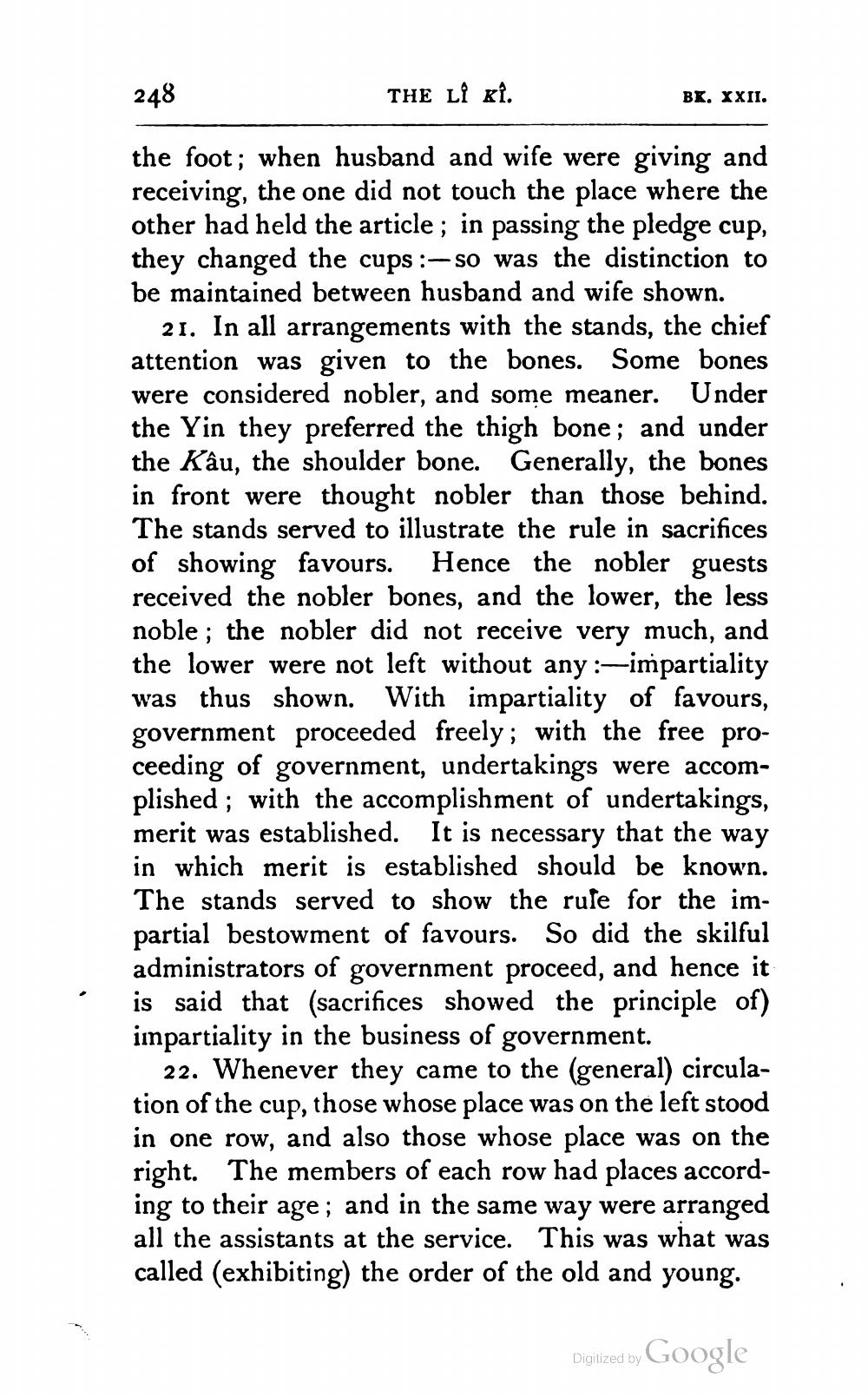________________
248
THE LÎ ki.
BK. XXII.
the foot; when husband and wife were giving and receiving, the one did not touch the place where the other had held the article ; in passing the pledge cup, they changed the cups :-So was the distinction to be maintained between husband and wife shown.
21. In all arrangements with the stands, the chief attention was given to the bones. Some bones were considered nobler, and some meaner. Under the Yin they preferred the thigh bone; and under the Kâu, the shoulder bone. Generally, the bones in front were thought nobler than those behind. The stands served to illustrate the rule in sacrifices of showing favours. Hence the nobler guests received the nobler bones, and the lower, the less noble; the nobler did not receive very much, and the lower were not left without any :-impartiality was thus shown. With impartiality of favours, government proceeded freely; with the free proceeding of government, undertakings were accomplished; with the accomplishment of undertakings, merit was established. It is necessary that the way in which merit is established should be known. The stands served to show the rule for the impartial bestowment of favours. So did the skilful administrators of government proceed, and hence it is said that (sacrifices showed the principle of) impartiality in the business of government.
22. Whenever they came to the (general) circulation of the cup, those whose place was on the left stood in one row, and also those whose place was on the right. The members of each row had places according to their age; and in the same way were arranged all the assistants at the service. This was what was called (exhibiting) the order of the old and young.
Digitized by Google




